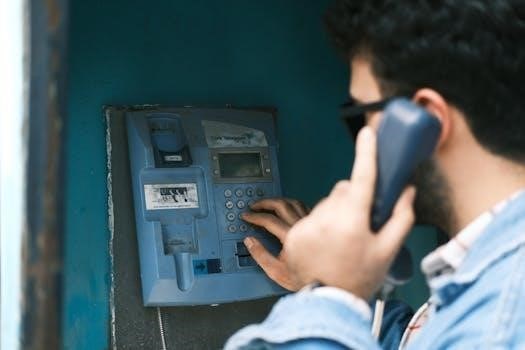What is a Manual Call Point?
Definition of a Manual Call Point (MCP)
A manual call point (MCP) is a crucial component of fire alarm systems, enabling individuals to manually trigger an alarm in an emergency. These devices, also known as pull stations, offer a direct way to alert others.
The primary function of a manual call point is to provide a readily accessible means for people to initiate a fire alarm signal. This is done when they discover a fire, especially before automatic detection occurs, ensuring prompt notification.
What is a Manual Call Point?
Definition of a Manual Call Point (MCP)
A Manual Call Point (MCP), often referred to as a pull station or break glass box, is a critical component of fire detection and alarm systems. It serves as a manually operated device that enables individuals to initiate a fire alarm signal upon discovering a fire or other emergency. Unlike automatic detectors, MCPs rely on human intervention to activate the alarm system, making them a vital element in ensuring rapid response. Defined in standards like BS EN 54-11, MCPs are designed for both indoor and outdoor use, providing a reliable means for alerting building occupants and emergency services to potential hazards. Their robust design ensures functionality in various environments, contributing significantly to overall fire safety.

What is a Manual Call Point?
Function of Manual Call Points
The primary function of Manual Call Points (MCPs) is to provide a direct and immediate means for individuals to manually trigger a fire alarm system. This is crucial in situations where a fire is detected before automatic detection systems, like smoke or heat detectors, are activated. MCPs ensure rapid notification to building occupants and emergency services, enabling swift evacuation and response. They serve as a vital backup to automated systems, especially in areas where early fire detection might be challenging. By allowing anyone to manually initiate an alarm, MCPs enhance overall fire safety and reduce potential delays in alerting people to danger. These devices play a key role in safeguarding lives and property by providing a simple, reliable method for raising the alarm.
Manual call points consist of a trigger mechanism, typically a button or glass element, that, when activated, initiates the fire alarm signal. This mechanism ensures a clear and intentional alarm activation.
Trigger Mechanism
The trigger mechanism within a manual call point is the core component responsible for initiating the fire alarm. This mechanism is designed for simple and direct activation, ensuring that anyone, even in a stressful situation, can easily trigger the alarm. Typically, it involves a resettable push button or a breakable glass element protecting a button. When the button is pressed or the glass broken, it completes an electrical circuit.
This action sends a signal to the fire alarm control panel, which then activates the alarm system. The design prioritizes reliability and ease of use, allowing for quick response in emergency situations. The trigger is usually bright and clearly marked.

Components and Operation
Activation Methods (Button Press/Glass Break)
Manual call points employ two primary activation methods⁚ button press and glass break. Button-press models require a user to firmly press a button, often protected by a hinged cover to prevent accidental activation. This action directly triggers the alarm system. Glass-break models feature a thin glass pane that must be broken to access the activation button behind it.
Breaking the glass serves as a deliberate act, reducing the likelihood of false alarms. Both methods achieve the same goal⁚ initiating an alarm signal to alert occupants of a potential fire. The choice of activation method depends on the specific application.

Types and Colors
Red Manual Call Points (Fire Alarms)
Red manual call points are universally recognized as fire alarm activators. Their distinct color aligns with fire safety equipment, providing immediate identification for individuals to manually trigger the fire alarm system.
Red Manual Call Points (Fire Alarms)
Red manual call points serve as the primary means for individuals to manually activate a fire alarm system. Their vibrant red color is strategically chosen to align with other essential fire safety equipment and signage, ensuring immediate recognition during emergencies. These devices are typically installed in easily accessible locations throughout a building, such as along exit routes and in common areas, to facilitate swift activation.
The purpose of a red manual call point is to allow occupants to quickly report a fire when they discover it, particularly before automatic detection systems, like smoke detectors, are triggered. By breaking the glass or pressing a button, individuals can initiate the alarm, alerting everyone in the building to evacuate and enabling a rapid response from emergency services. The simplicity and visibility of red manual call points make them a vital component of any comprehensive fire safety plan.
Green Manual Call Points (Door Release)
Green manual call points serve a specific and crucial function within building safety systems⁚ door release. Unlike their red counterparts, which trigger fire alarms, green call points are strategically located near exits to facilitate safe and efficient evacuation during emergencies. Their purpose is to manually override access control systems, allowing occupants to quickly open doors that might otherwise be locked or secured.
In the event of a fire or other emergency, a green manual call point can be activated to instantly release the door, providing a clear and unobstructed escape route. This is particularly important in buildings with electronic locking mechanisms or security protocols that could impede evacuation efforts. The distinct green color ensures easy identification, differentiating them from fire alarm activation points and minimizing confusion during critical situations. Green manual call points play a vital role in ensuring the safety and well-being of building occupants by enabling rapid egress.
BS EN 54-11 is the European standard that specifies the requirements, test methods, and performance criteria for manual call points used in fire detection and fire alarm systems, ensuring reliability and consistency.
Standards and Regulations
BS EN 54-11 Standard
The BS EN 54-11 standard is a critical European norm that outlines the stringent requirements and detailed test procedures specifically for manual call points (MCPs) integrated within fire detection and alarm systems. This standard ensures that these devices, vital for manually initiating fire alarms, meet a consistent level of performance and reliability. It covers various aspects, including the construction, functionality, and environmental testing of MCPs. Adherence to BS EN 54-11 guarantees that manual call points can effectively operate in emergency situations, providing a trustworthy means for individuals to raise an alarm and facilitate a timely response to potential fire hazards, thus safeguarding lives and property.
The commissioning process involves activating each manual call point to ensure proper functionality. This crucial step verifies that the device correctly triggers the fire alarm system, ensuring its readiness for emergencies.

Installation and Commissioning
Commissioning Process
The commissioning process for manual call points is a critical step in ensuring the reliability and effectiveness of a fire alarm system. It involves a systematic approach to verify that each device is correctly installed, wired, and functioning as intended. Initially, a thorough visual inspection is conducted to confirm proper mounting and absence of any physical damage. Subsequently, the wiring connections are checked to ensure secure and correct terminations according to the system’s design specifications.
Next, each manual call point is individually activated to confirm that it successfully initiates an alarm signal at the fire alarm control panel. The response time and signal strength are carefully monitored to meet the required standards. Any discrepancies or malfunctions are promptly addressed and rectified, often involving troubleshooting wiring issues or replacing faulty components.
Finally, detailed documentation is maintained, recording the commissioning date, personnel involved, and the results of each test. This documentation serves as a valuable reference for future maintenance and inspections, ensuring the continued integrity of the fire alarm system and the safety of the building occupants.
Manual call points serve the crucial purpose of allowing individuals to manually activate a fire alarm system. This is essential in situations where automatic detection may be delayed or ineffective.
These devices also aid in pinpointing the precise location of a fire within a building. When activated, they send a signal to the control panel, indicating where the alarm was triggered.
Manually Triggering a Fire Alarm
The most fundamental purpose of a manual call point (MCP) is to empower individuals to manually initiate a fire alarm system in the event of a fire or suspected fire. This is particularly crucial when a fire is discovered before automatic detectors, like smoke or heat sensors, are activated. MCPs provide an immediate means of alerting occupants and emergency services, potentially saving lives and minimizing property damage.
Manual activation is vital in situations where automatic detection might be delayed due to factors such as the fire’s location, the type of fire, or detector malfunctions. By offering a direct, human-controlled method of alarm activation, MCPs enhance the overall responsiveness and effectiveness of a fire safety system, ensuring a swift response to potential threats, and allowing for faster evacuation.
Purpose
Identifying the Location of a Fire
Beyond simply triggering an alarm, manual call points (MCPs) play a crucial role in pinpointing the fire’s location within a building. Each MCP is typically linked to a specific zone or address on the fire alarm control panel. When activated, the panel displays the precise location of the triggered MCP, enabling responders to quickly identify the fire’s source.
This localized information is invaluable for firefighters and other emergency personnel, allowing them to efficiently navigate the building, assess the situation, and initiate appropriate fire suppression measures. By providing clear and immediate locational data, MCPs minimize response times, improve the effectiveness of firefighting efforts, and reduce the overall impact of a fire incident by guiding responders to the area needing help.. This also assists in evacuation.